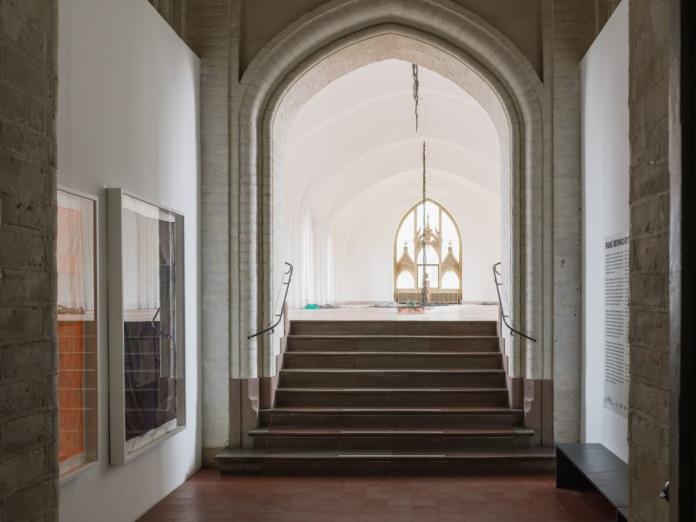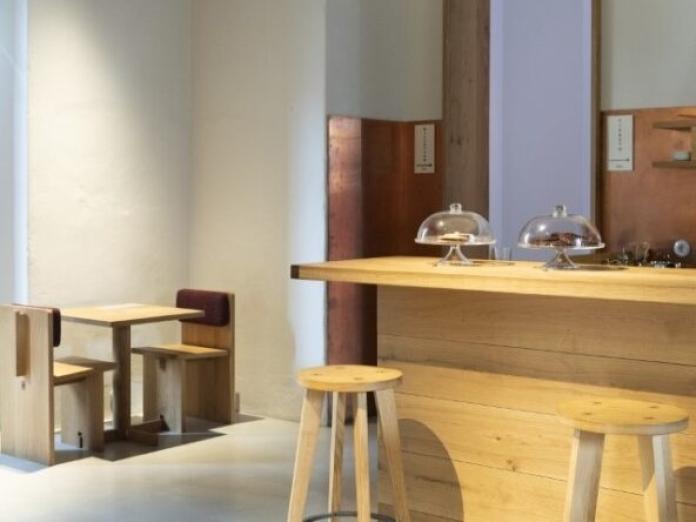From church to art centre
13TH CENTURY: ST NICHOLAS CHURCH
St Nicholas Church is one of the oldest churches in Copenhagen, and was originally built in the beginning of the 1200s. When it was first built it had neither tower nor a spire. Due to its position close to the city harbour it was named after the patron saint of the seafarers St Nicolas.
1529: THE CENTRE OF THE DANISH REFORMATION
In 1529, Hans Tausen (1494–1561) was employed as a parish pastor at St Nicholas Church. Tausen was a strong advocate of the Reformation and is often referred to as “the Danish Luther”. St Nicholas Church therefore became the centre of the Reformation in Copenhagen, and the very first divine service in Danish was held by Tausen at St Nicholas Church.
1591 - 1795: THE CHURCH TOWER
Tthe church had become the preferred church of the respectable Copenhagen citizens and in 1591 a Dutch Renaissance 90 m (300 ft) long spire was added. In 1628, the spire tumbled to the ground during a winter gale. The church was subsequently left without a spire until 1669 when it was rebuilt.
The building played host to history by witnessing one of the world's first same-sex marriages in the 18th century.
1795: THE GREAT FIRE
In 1795, a fire broke out in Copenhagen that raged for three days. City buildings stood close, and the fire spread rapidly and ended up devouring a quarter of all the buildings in the city. When the fire reached St Nicholas Church the spire came down for the second time in the history of the church, and the fire left the church as a ruin. The spire pierced the ground next to the nave, and it was not found until a century later during an excavation at Nicholas Square.
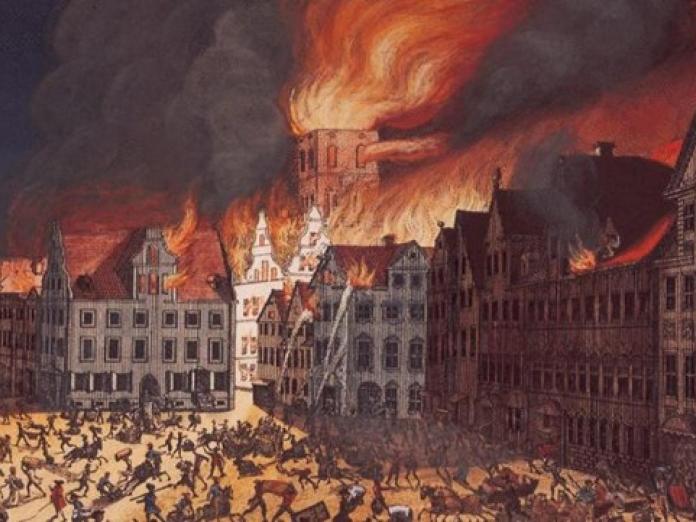
The 1795 fire marked the end of the building’s function as a church. The state was in no financial position to rebuild the church, and the congregation was formally dissolved in 1805 and distributed among other Copenhagen churches. The church ruin and the churchyard were demolished, leaving only the tower standing. Today, the top of the old spire can be seen in the entrance hall of Nikolaj Kunsthal.
1800 - 1900: A FIRE TOWER AND ‘TIME-BALL’
Throughout the 1800s, the Nikolaj Tower served in various capacities. City watchmen used it as a fire tower. If they spotted a fire in progress from the tower, they would hold out a lantern in the direction of the fire. From 1868 to 1908, the Nikolaj Tower was equipped with a so-called “time ball”. The ball was hoisted up a pole at the top of the tower, and every day at 1pm the time ball came down as an indication of exactly what time it was.
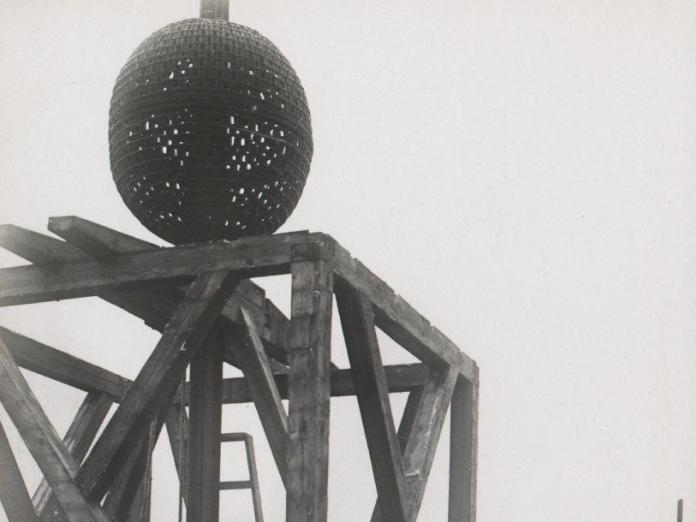
Over the century, small butcher’s shops started opening around the tower, and the site was in effect turned into a meatpacking district, dubbed “The Stomach” by the Copenhageners. This continued until the reconstruction of the church in 1917. In the 1890s, the artist and inventor Robert Storm Petersen worked as an apprentice in his father's butcher's shop in 'The Stomach'.
The building served as the backdrop for Hans Christian Andersen's drama 'Love of Nicolai Tower,’ which was performed at the Royal Theatre in 1829.
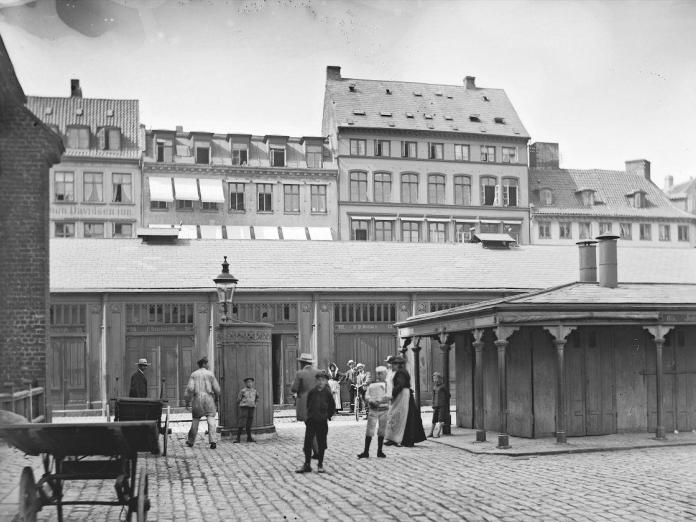
1905 - 1917: THE RECONSTRUCTION
In 1905, the Danish brewer and patron of the arts Carl Jacobsen financed the rebuilding of the spire for Nikolaj Tower, and in 1909 the topping out ceremony was held to celebrate the new spire. Permanent Secretary P.N. Rentzmann along with his sister Ida P.N. Rentzmann testamented their fortune to the rebuilding of St Nicholas Church in its original shape and form. Redesigned by architect Hans Christian Amberg between 1915 and 1917, the building is recognised for its distinct red bricks, Neo-Baroque church windows, and a 35-meter tower adorned in iridescent green copper. The original architecture can amongst other places be seen in the reconstructed buttresses on the outside of the building. They were originally there to support the building from sinking into the wet foundation it stood on. Until his death in 1923, P.N. Rentzmann himself lived in an apartment in the building.

1917 - 1978: A CULTURAL CENTRE IN COPENHAGEN
The Rentzmanns had intended St Nicholas to be rebuilt to yet again function as a church, but the then mayor of Copenhagen decided that the building should be used for cultural purposes, and subsequently it housed the Copenhagen Public Library which was here right up until 1958. During the First World War it housed the Veterinary Council and a Naval Museum from 1958 to 1978.
The church's organ was built by Marcussen & Son in 1930, and the first to have a mechanical action and slider chest in Scandinavia.
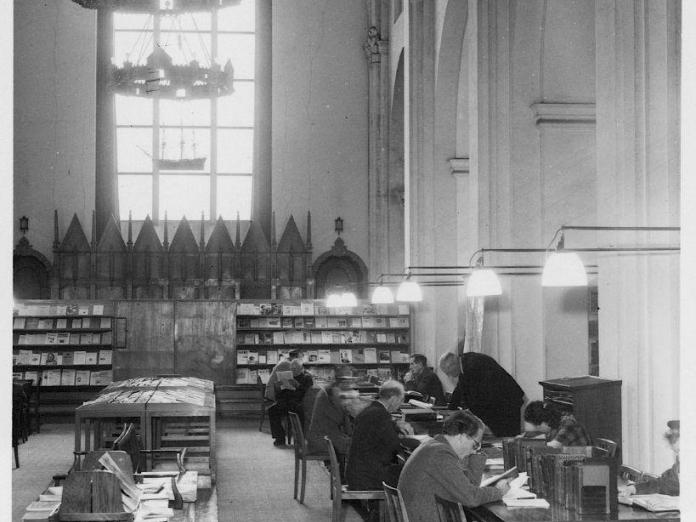
1957 - 1981: THE FLUXUS ART MOVEMENT
In 1957, the danish artist and activist Knud Pedersen established an art library in the building and in 1962 organized some of the first Fluxus-movement art performances with the german-danish artist Arthur Köpcke.

1981 - 2018: NIKOLAJ KUNSTHAL
Since 1981 the building has functioned as a dynamic platform for art, creatives and the culturally curious. It was named ‘Nikolaj Kunsthal’ in 2011. Its mission is to be an epicenter for Copenhagen's contemporary art scene, celebrating its diversity, vitality and unique voices. Located in one of the capital’s oldest churches, Nikolaj Kunsthal brings local and international artists together in its innovative exhibition, event, education and digital programmes. Nikolaj Kunsthal stands as a symbol of transformation, demonstrating how a historical landmark can maintain relevance by adapting to the evolving needs of society.
2018 - PRESENT: CONTEMPORARY ART AND THE BEST CITY VIEW
In 2018, Helene Nyborg Bay became Director of Nikolaj Kunsthal. The Tower opened to the public that same year, offering visitors the best city view from the city’s third highest tower in Copenhagen.
In 2022, a new cafe and shop by MEE Studio was introduced, offering a reflective space that blends the building's history with its dynamic functionality.
